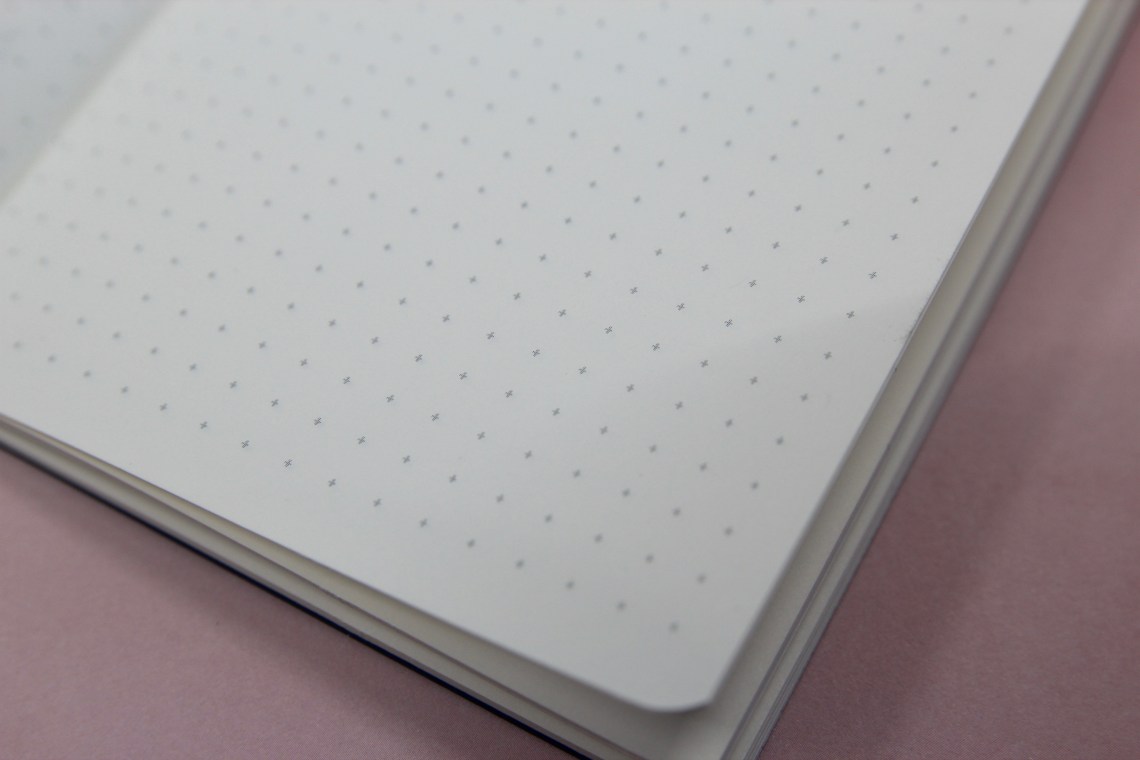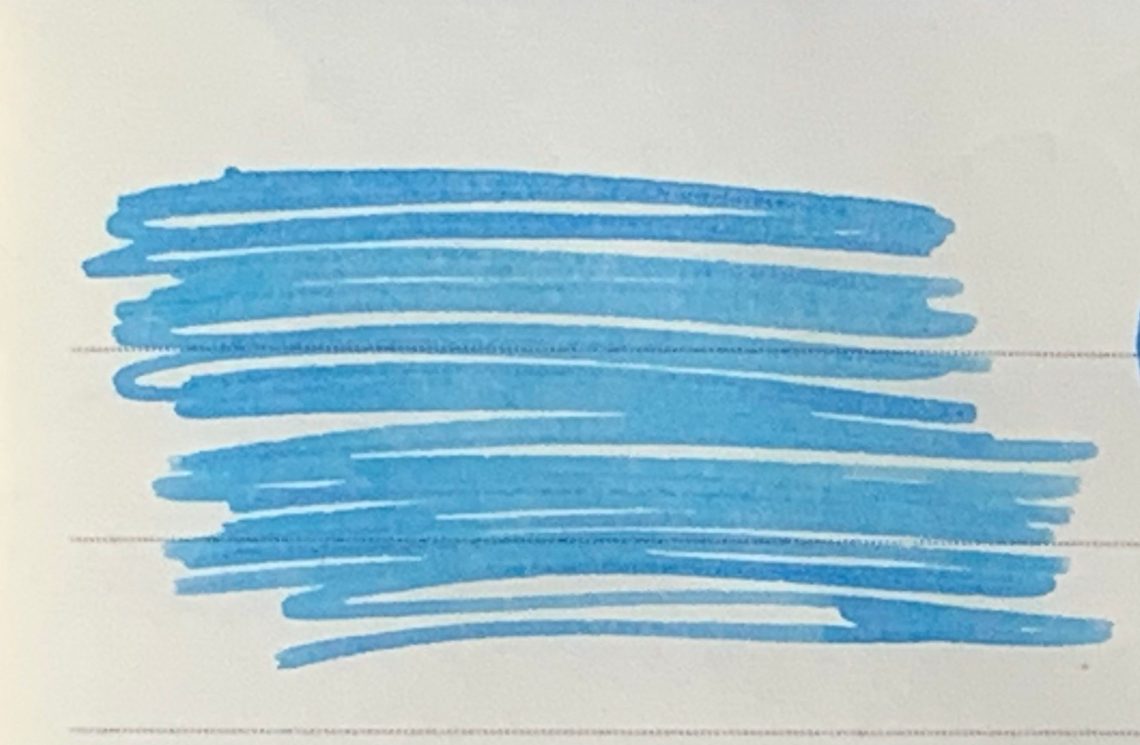A few months ago I reviewed my first Sailor Studio ink – 123. This is one of the most popular inks in the Sailor Studio line up, typically selling as fast as retailers can order it! There’s a good reason for this; Sailor Studio 123 is an incredibly unique ink that contains a rainbow of colors. Since Sailor creates these inks in families that share characteristics while the saturation level varies, I decided to try the closest ink to 123 – Sailor Studio 223 ($18 for 20mL at Dromgooles)!

The label on 223 shows a light to medium grey with cool undertones.

But as soon as the bottle is opened, the underlying characteristics of the ink begin to show. The cap shows blues, purples, and pinks.

The swatch card also started revealing the complex miix of Sailor Studio 223. The ink has an overall color of grey, but has a main tone towards pinkish-purple. the edges of the heavier ink applications show blue and green halos with a very slight sheen of black.

In writing, the ink can vary as well. I chose a Sailor Zoom nib to demonstrate the difference your nib selection can make. As you can see, shading is present even in an extra fine nib (in this case it was actually a Zoom nib writing upside down).

To show the relationship to Sailor Studio 123, here are the two ink swatches with Papier Plume Bayou Nightfall for comparison.

Grey. Grey is a tough color to pin down since it can swing from warm to cool but still be filed under the general term of grey. These were the closest greys I had, with Papier Plume Oyster Grey being the winner.

So what makes up this color shifting ink? I used a paper towel to catch stray drips as I filled the Sailor. This is the most saturated of the stray drops. No water was added.

Another drop spread out farther:

This last example was one where I added a bit of water so the colors could spread further. I’m fairly certain the entire rainbow is present.

Sailor 223 may actually be my newest favorite Studio ink since it is more legible in normal writing. For those who admire 123 but dislike pastel inks, try 223 instead. Plus it isn’t sold out everywhere!
If you have ever tried to purchase Sailor Studio inks, you know how tough it can be to find a store selling it, pay for the shipping and wait for the slow boat to make its way overseas (unless you are lucky enough to live in Japan). Good news! Sailor has recently started allowing sales of these small bottles of sunshine by select retailers in the US. However, Sailor did put a restriction on these sales – orders for Sailor Studio inks can only be taken over the phone. Dromgoole’s was kind enough to provide this bottle of 223 for review and you can find ordering instructions here. The entire staff is great to talk to when ordering and if you order before the Dallas Pen Show, you can pick up your ink at their table – no shipping cost!
Tools:
- Paper: Nanami Seven Seas Writer ($26 from Nanami Paper), Col-o-ring cards ($10 from Well-Appointed Desk)
- Pen: Bungubox San Fransisco Sailor with a Zoom steel nib ($230 from Bungubox)
- Ink: Sailor Studio 223 ($18 for 20ml bottle from Dromgooles)
DISCLAIMER: The ink in this review was provided free of charge by Dromgoole’s for the purpose of review. Please see the About page for more details.






































 Tina Koyama is an urban sketcher in Seattle. Her blog is
Tina Koyama is an urban sketcher in Seattle. Her blog is 















